【汚染水続】10/22のワシントンポストが、「福島原発の汚染水問題は、原発事故と同規模の大問題になってきた」と報じている。東京のチコ・ハリアン記者の記事だ。
http://www.washingtonpost.com/world/for-tepco-and-japans-fukushima-daiichi-nuclear-plant-toxic-water-stymies-cleanup/2013/10/21/406f4d78-2cba-11e3-b141-298f46539716_story.html
<TOKYO ― Two and a half years after a series of nuclear meltdowns, Japan’s effort to clean up what remains of the Fukushima Daiichi power plant is turning into another kind of disaster. (一連のメルトダウン事故の2年半後、福島第1原発の残骸を処理する日本の努力は別の大災害に直面している。)
The site now stores 90 million gallons of radioactive water, more than enough to fill Yankee Stadium to the brim. An additional 400 tons of toxic water is flowing daily into the Pacific Ocean, and almost every week, the plant operator acknowledges a new leak.(敷地内には9000万ガロンの放射能汚染水が溜められているが、これはヤンキー・スタジアムから溢れるほどの量だ。これに加えて毎日、400トンの毒水が太平洋に流れ込んでいる。さらにほとんど毎週のように、原発運営者は新たな漏洩を認めている。)
That operator, Tokyo Electric Power Co., known as Tepco, was put in charge of the cleanup process more than two years ago and subsequently given a government bailout as its debts soared. The job of dismantling the facility was supposed to give Tepco an opportunity to rebuild credibility.(原発を運営している東電はTEPCOとして知られるが、2年以上前に事故処理を開始し、その後、経営の悪化に伴い政府から補助金も受けた。原発解体作業は東電に信頼回復の機会を与えるものと想定されていた。)
But many lawmakers and nuclear industry specialists say that Tepco is perpetuating the kinds of mistakes that led to the March 2011 meltdowns: underestimating the plant’s vulnerabilities, ignoring warnings from outsiders and neglecting to draw up plans for things that might go wrong. Those failures, they say, have led to the massive buildup and leakage of toxic water.(だが多くの政治家や原発産業の専門家は、東電は2011年3月のメルトダウンにつながったと同じミスをずっと繰り返しているという:原子炉の脆弱性の過小評価、外部の専門家の警告の無視、上手く行かない場合に備えて予備対策を計画しておくことの無視。彼らによれば、これらの失敗が毒水の膨大な蓄積と漏洩をもたらしたという。)
Thanks to that quick evacuation, experts say, there are no expectations of a Chernobyl-style spike in cancer cases ― although the government is conducting thyroid checks of thousands of children. But the flow of contaminated water amounts to a slow-burning environmental disaster with implications for Japan’s wildlife and its food chain.(迅速な避難のせいでチェルイノブイリ型のがん多発は予測されていないが、政府は数千人に及ぶ子供の甲状腺チェックを行っている。だが問題は、汚染水の流入が日本の野生生物とその食物連鎖に影響を与えかねないほど、ゆるやかに燃える環境災害のレベルに達しようとしていることだ。)
The problems have prompted the central government to step in with about $500 million to fund new countermeasures, including a subterranean “ice wall” designed to keep groundwater from flowing into irradiated buildings.(
The 40-year decommissioning is expected to cost 10 trillion yen, or about $100 billion ― roughly two years’ worth of Tepco’s revenue ― and the company says it is trying to save up and cut other costs. But for many Japanese, the company’s assurances inspire little confidence. (40年に及ぶ廃炉作業には10兆円、約1000億ドルの費用がかかると想定されいる:東電収入の2年分だ。東電は冗費をカットし備蓄を増やすと主張している。しかし多くの日本人は会社の確言をほとんど信用していない。)
Two members of Japan’s national legislature, speaking on the condition of anonymity to share what they describe as sensitive details, say Tepco continues to spend irresponsibly on lobbying politicians, offering them free trips to nuclear sites that include meals and lodging in hot springs resorts. A Tepco spokesman said the company does not offer such trips.(二人の国会議員が、微妙な問題だからと匿名を条件に語った。東電は無責任にも政治家に対するロビー活動に金を使い続けている。政治家を無料で各地の原発に案内し、タダで飲み食いさせ、温泉地に泊まらせている。東電の広報担当者はそのような事実はないと語った。)
The coastal Daiichi plant is on an old riverbed, its back yard a line of forested hills and mountains. Even before the 2011 disaster, rainfall from across the region would funnel toward the plant. Such inflow was rarely a problem, because a piping system collected groundwater and spit it into the ocean. Minor leaks would sometimes form in buildings built below sea level, but even that water, uncontaminated, was easy to pump out and dump.(海岸に位置する福島第一原発は古い河床の上にあり、その後背地は線状の樹林丘陵と山脈になっている。2011年の大事故の前にも、この地帯からの降雨はロート状に原発に向かって流れていた。こういう流入はまず問題にならない。というのも配管システムが地下水を集め、大洋へ放出するからだ。海面下にある建物では時に微量の水漏れが生じるかもしれないが、この水は汚染されていないので、ポンプで汲み出し容易に排水できる。)
The 9.0-magnitude earthquake and 46-foot tsunami wave of March 11, 2011, threw the plant’s groundwater system out of whack. Damaged pipes no longer corralled the inflow, meaning that the plant lost its first line of defense against water streaming in from the hillsides. Worse, the plant had become a disaster site, and any water that flowed under or through the area picked up toxicity of its own. Groundwater that made its way into the reactor buildings also mixed with a separate channel of intensely contaminated water that had been used to douse and cool the reactors.(2011年3月11日のM9.0の地震と15メートルの津波は原発の地下水システムに大打撃を与えた。損傷したパイプではもはや流入水を処理しきれなくなったが、これは原発が丘側から流れ出る水に対する防御の最前線を突破されたことを意味する。もっと悪いことに、原発自体が大災害の場となって、ここに流れ込むか、脇を通る水は放射能で汚染される。原子炉建屋に流れ込む水は、原子炉を冷却するのに使われた別の系統の、高度に汚染された水と混じり合っている。)
No longer could the groundwater simply be discarded into the ocean.
(もはや地下水を簡単に海に投棄するわけにいかないのだ。)
TEPCO’S FRAGILE SITUATION(東電のもろい立場)
Some nuclear industry executives who have worked with Tepco say the company shouldn’t be faulted for prioritizing issues other than the groundwater. They note that Tepco has managed to cool the molten reactors while reinforcing damaged buildings against further earthquakes.(東電と共同で仕事をした経験のある原発関係会社役員はこう語った。東電は地下水問題以外にも意を注いでいる、として非難されるべきではない。東電は損傷した建屋を新たな地震に備えて補強しながら、溶融した原子炉をなんとか冷却したではないか。)
But the buildup of contaminated water also complicates other work at the plant.
“Right now, the groundwater is the biggest problem at the plant, and one Tepco needs to solve thoroughly,” said Tsuneo Futami, who was superintendent of Fukushima Daiichi from 1997 until 2000. “Dealing with this is almost a prerequisite for decommissioning.”(だが汚染水貯蔵問題は原発での他の仕事を複雑化している。「目下、原発での最大の問題は地下水で、東電が完全に解決すべき問題です」と福島第一の所長を1997~2000年まで務めた二見よしおは述べた。「これに対処することが廃炉のほとんど前提条件です」。)
The remaining options to deal with the buildup are unpopular or flawed. The latest plan includes the ice wall, a new groundwater pumping system and yet another system to filter radionuclides. But the ice-wall technology is unproven, and taxpayers will foot the bill because Tepco lacks the funding to deal with major, unplanned problems at the plant.
(汚染水に対する残りのオプションは不人気で欠陥がある。最新の計画は「氷壁」、新規の地下水ポンプ系と新たな放射能除去システムだ。だが「氷壁」技術は実証されておらず、東電は問題の原発で予期しない大きな問題が発生した場合に対処できる資金がないから、国民の税金負担となる。)
この後、溜まった汚染水を浄化装置で沪過後に、海に放出するというオプションが述べられている。
Some nuclear engineers and government officials say Tepco has one other option that would ease management of the site: It can dump the stored water into the ocean, provided it can be refiltered and its now-high radiation levels lowered to within legal limits. The International Atomic Energy Agency said in April that Japan should consider such “controlled discharges.” The chairman of Japan’s nuclear watchdog, Shunichi Tanaka, said last month that dumping might be necessary.(原発技術者と政府の官僚のあるものはこういう。東電には第一原発の処理を容易にするにはもう一つのオプションがある:再処理して高い放射線レベルを法定基準以下に低下させることができるという条件があれば、東電は貯蔵している水を海に投棄できる。IAEA議長は4月に日本はこういう「管理された放出」を考慮すべきだと述べた。日本の核管理の番犬田中俊一は、先月、投棄が必要になるかも知れないと発言した。)
抜粋ですが、「調査報道」のよい見本だと思います。こうでなければ新聞の価値がない。
これを書いている最中に、新たな「汚染水漏れ」の情報が入ってきました。
http://www.hazardlab.jp/know/topics/detail/3/4/3445.html
なんと「排水溝の掃除をしていなかった」だと! 個人だって台風が来る前には自宅の雨どいの掃除をするでしょうが… つまり現場作業員はゾンビみたいなもので、自発的に何かを考えたりはできないようだ。ハリアン記者の指摘した通りの事態になってきた。
(これを追記している10/24朝は台風27号はまだ南大東島西南西170キロの海上にあるというのに、昨夜の天気予報に反して自宅周辺はもう雨になっている。外気温15℃と薄寒い。
これまで以上の大雨がF1を襲いはしないかと心配になる。)
「共同International」http://www.globalpost.com/dispatch/news/kyodo-news-international/131023/tepco-eyes-fuel-removal-fukushima-no-4-unit-starting-e
は、予定より早く四号機の使用済み核燃料の取り出しが始まると、海外に楽観論を流している。
<Tokyo Electric Power Co. plans to start removing nuclear fuel from the spent fuel pool at the top of the No. 4 reactor building at the crippled Fukushima Daiichi plant in early November, about a week earlier than scheduled, sources close to TEPCO said Wednesday.
The process, to continue until the end of next year, will mark a new stage in the decommissioning of the Nos. 1 to 4 units severely damaged in the nuclear crisis triggered by a huge earthquake and tsunami on March 11, 2011.>
それでもメルトダウンしなかった4号炉の燃料撤去が終了するのは、トラブルなく進行しても、1年後になる。
英文朝日は<Fukushima Water Crisis>という呼称を使用している。
http://ajw.asahi.com/article/0311disaster/fukushima/AJ201310230078
ワシントンポストはドキュメンタリー映画監督ロバート・ストーン(オリバー・ストーンとは別人)が、「パンドラの約束」という福島事故を主題にした映画製作を進めていることを報じている。http://www.washingtonpost.com/entertainment/director-of-pandoras-promise-urges-japan-to-retain-nuclear-power-despite-fukushima/2013/10/22/c5fa600a-3ace-11e3-b0e7-716179a2c2c7_story.html
<He urges Japan to use the Fukushima crisis as a chance to refine its technology, science and engineering to build the world’s best reactors instead of withdrawing from nuclear power.>
彼はクリーン・エネルギー論者で、日本は、福島危機をその技術、科学、工学をより洗練させる機会として利用し、原子力から撤退するのではなく、世界で最良の原子炉を建設するべきだ、という意見をもっているそうだ。WPはこうしたバランスの取れた報道をするところがよい。
上映時間役90分の映画が公開になったら、観に行きたいと思う。
http://www.washingtonpost.com/world/for-tepco-and-japans-fukushima-daiichi-nuclear-plant-toxic-water-stymies-cleanup/2013/10/21/406f4d78-2cba-11e3-b141-298f46539716_story.html
<TOKYO ― Two and a half years after a series of nuclear meltdowns, Japan’s effort to clean up what remains of the Fukushima Daiichi power plant is turning into another kind of disaster. (一連のメルトダウン事故の2年半後、福島第1原発の残骸を処理する日本の努力は別の大災害に直面している。)
The site now stores 90 million gallons of radioactive water, more than enough to fill Yankee Stadium to the brim. An additional 400 tons of toxic water is flowing daily into the Pacific Ocean, and almost every week, the plant operator acknowledges a new leak.(敷地内には9000万ガロンの放射能汚染水が溜められているが、これはヤンキー・スタジアムから溢れるほどの量だ。これに加えて毎日、400トンの毒水が太平洋に流れ込んでいる。さらにほとんど毎週のように、原発運営者は新たな漏洩を認めている。)
That operator, Tokyo Electric Power Co., known as Tepco, was put in charge of the cleanup process more than two years ago and subsequently given a government bailout as its debts soared. The job of dismantling the facility was supposed to give Tepco an opportunity to rebuild credibility.(原発を運営している東電はTEPCOとして知られるが、2年以上前に事故処理を開始し、その後、経営の悪化に伴い政府から補助金も受けた。原発解体作業は東電に信頼回復の機会を与えるものと想定されていた。)
But many lawmakers and nuclear industry specialists say that Tepco is perpetuating the kinds of mistakes that led to the March 2011 meltdowns: underestimating the plant’s vulnerabilities, ignoring warnings from outsiders and neglecting to draw up plans for things that might go wrong. Those failures, they say, have led to the massive buildup and leakage of toxic water.(だが多くの政治家や原発産業の専門家は、東電は2011年3月のメルトダウンにつながったと同じミスをずっと繰り返しているという:原子炉の脆弱性の過小評価、外部の専門家の警告の無視、上手く行かない場合に備えて予備対策を計画しておくことの無視。彼らによれば、これらの失敗が毒水の膨大な蓄積と漏洩をもたらしたという。)
Thanks to that quick evacuation, experts say, there are no expectations of a Chernobyl-style spike in cancer cases ― although the government is conducting thyroid checks of thousands of children. But the flow of contaminated water amounts to a slow-burning environmental disaster with implications for Japan’s wildlife and its food chain.(迅速な避難のせいでチェルイノブイリ型のがん多発は予測されていないが、政府は数千人に及ぶ子供の甲状腺チェックを行っている。だが問題は、汚染水の流入が日本の野生生物とその食物連鎖に影響を与えかねないほど、ゆるやかに燃える環境災害のレベルに達しようとしていることだ。)
The problems have prompted the central government to step in with about $500 million to fund new countermeasures, including a subterranean “ice wall” designed to keep groundwater from flowing into irradiated buildings.(
The 40-year decommissioning is expected to cost 10 trillion yen, or about $100 billion ― roughly two years’ worth of Tepco’s revenue ― and the company says it is trying to save up and cut other costs. But for many Japanese, the company’s assurances inspire little confidence. (40年に及ぶ廃炉作業には10兆円、約1000億ドルの費用がかかると想定されいる:東電収入の2年分だ。東電は冗費をカットし備蓄を増やすと主張している。しかし多くの日本人は会社の確言をほとんど信用していない。)
Two members of Japan’s national legislature, speaking on the condition of anonymity to share what they describe as sensitive details, say Tepco continues to spend irresponsibly on lobbying politicians, offering them free trips to nuclear sites that include meals and lodging in hot springs resorts. A Tepco spokesman said the company does not offer such trips.(二人の国会議員が、微妙な問題だからと匿名を条件に語った。東電は無責任にも政治家に対するロビー活動に金を使い続けている。政治家を無料で各地の原発に案内し、タダで飲み食いさせ、温泉地に泊まらせている。東電の広報担当者はそのような事実はないと語った。)
The coastal Daiichi plant is on an old riverbed, its back yard a line of forested hills and mountains. Even before the 2011 disaster, rainfall from across the region would funnel toward the plant. Such inflow was rarely a problem, because a piping system collected groundwater and spit it into the ocean. Minor leaks would sometimes form in buildings built below sea level, but even that water, uncontaminated, was easy to pump out and dump.(海岸に位置する福島第一原発は古い河床の上にあり、その後背地は線状の樹林丘陵と山脈になっている。2011年の大事故の前にも、この地帯からの降雨はロート状に原発に向かって流れていた。こういう流入はまず問題にならない。というのも配管システムが地下水を集め、大洋へ放出するからだ。海面下にある建物では時に微量の水漏れが生じるかもしれないが、この水は汚染されていないので、ポンプで汲み出し容易に排水できる。)
The 9.0-magnitude earthquake and 46-foot tsunami wave of March 11, 2011, threw the plant’s groundwater system out of whack. Damaged pipes no longer corralled the inflow, meaning that the plant lost its first line of defense against water streaming in from the hillsides. Worse, the plant had become a disaster site, and any water that flowed under or through the area picked up toxicity of its own. Groundwater that made its way into the reactor buildings also mixed with a separate channel of intensely contaminated water that had been used to douse and cool the reactors.(2011年3月11日のM9.0の地震と15メートルの津波は原発の地下水システムに大打撃を与えた。損傷したパイプではもはや流入水を処理しきれなくなったが、これは原発が丘側から流れ出る水に対する防御の最前線を突破されたことを意味する。もっと悪いことに、原発自体が大災害の場となって、ここに流れ込むか、脇を通る水は放射能で汚染される。原子炉建屋に流れ込む水は、原子炉を冷却するのに使われた別の系統の、高度に汚染された水と混じり合っている。)
No longer could the groundwater simply be discarded into the ocean.
(もはや地下水を簡単に海に投棄するわけにいかないのだ。)
TEPCO’S FRAGILE SITUATION(東電のもろい立場)
Some nuclear industry executives who have worked with Tepco say the company shouldn’t be faulted for prioritizing issues other than the groundwater. They note that Tepco has managed to cool the molten reactors while reinforcing damaged buildings against further earthquakes.(東電と共同で仕事をした経験のある原発関係会社役員はこう語った。東電は地下水問題以外にも意を注いでいる、として非難されるべきではない。東電は損傷した建屋を新たな地震に備えて補強しながら、溶融した原子炉をなんとか冷却したではないか。)
But the buildup of contaminated water also complicates other work at the plant.
“Right now, the groundwater is the biggest problem at the plant, and one Tepco needs to solve thoroughly,” said Tsuneo Futami, who was superintendent of Fukushima Daiichi from 1997 until 2000. “Dealing with this is almost a prerequisite for decommissioning.”(だが汚染水貯蔵問題は原発での他の仕事を複雑化している。「目下、原発での最大の問題は地下水で、東電が完全に解決すべき問題です」と福島第一の所長を1997~2000年まで務めた二見よしおは述べた。「これに対処することが廃炉のほとんど前提条件です」。)
The remaining options to deal with the buildup are unpopular or flawed. The latest plan includes the ice wall, a new groundwater pumping system and yet another system to filter radionuclides. But the ice-wall technology is unproven, and taxpayers will foot the bill because Tepco lacks the funding to deal with major, unplanned problems at the plant.
(汚染水に対する残りのオプションは不人気で欠陥がある。最新の計画は「氷壁」、新規の地下水ポンプ系と新たな放射能除去システムだ。だが「氷壁」技術は実証されておらず、東電は問題の原発で予期しない大きな問題が発生した場合に対処できる資金がないから、国民の税金負担となる。)
この後、溜まった汚染水を浄化装置で沪過後に、海に放出するというオプションが述べられている。
Some nuclear engineers and government officials say Tepco has one other option that would ease management of the site: It can dump the stored water into the ocean, provided it can be refiltered and its now-high radiation levels lowered to within legal limits. The International Atomic Energy Agency said in April that Japan should consider such “controlled discharges.” The chairman of Japan’s nuclear watchdog, Shunichi Tanaka, said last month that dumping might be necessary.(原発技術者と政府の官僚のあるものはこういう。東電には第一原発の処理を容易にするにはもう一つのオプションがある:再処理して高い放射線レベルを法定基準以下に低下させることができるという条件があれば、東電は貯蔵している水を海に投棄できる。IAEA議長は4月に日本はこういう「管理された放出」を考慮すべきだと述べた。日本の核管理の番犬田中俊一は、先月、投棄が必要になるかも知れないと発言した。)
抜粋ですが、「調査報道」のよい見本だと思います。こうでなければ新聞の価値がない。
これを書いている最中に、新たな「汚染水漏れ」の情報が入ってきました。
http://www.hazardlab.jp/know/topics/detail/3/4/3445.html
なんと「排水溝の掃除をしていなかった」だと! 個人だって台風が来る前には自宅の雨どいの掃除をするでしょうが… つまり現場作業員はゾンビみたいなもので、自発的に何かを考えたりはできないようだ。ハリアン記者の指摘した通りの事態になってきた。
(これを追記している10/24朝は台風27号はまだ南大東島西南西170キロの海上にあるというのに、昨夜の天気予報に反して自宅周辺はもう雨になっている。外気温15℃と薄寒い。
これまで以上の大雨がF1を襲いはしないかと心配になる。)
「共同International」http://www.globalpost.com/dispatch/news/kyodo-news-international/131023/tepco-eyes-fuel-removal-fukushima-no-4-unit-starting-e
は、予定より早く四号機の使用済み核燃料の取り出しが始まると、海外に楽観論を流している。
<Tokyo Electric Power Co. plans to start removing nuclear fuel from the spent fuel pool at the top of the No. 4 reactor building at the crippled Fukushima Daiichi plant in early November, about a week earlier than scheduled, sources close to TEPCO said Wednesday.
The process, to continue until the end of next year, will mark a new stage in the decommissioning of the Nos. 1 to 4 units severely damaged in the nuclear crisis triggered by a huge earthquake and tsunami on March 11, 2011.>
それでもメルトダウンしなかった4号炉の燃料撤去が終了するのは、トラブルなく進行しても、1年後になる。
英文朝日は<Fukushima Water Crisis>という呼称を使用している。
http://ajw.asahi.com/article/0311disaster/fukushima/AJ201310230078
ワシントンポストはドキュメンタリー映画監督ロバート・ストーン(オリバー・ストーンとは別人)が、「パンドラの約束」という福島事故を主題にした映画製作を進めていることを報じている。http://www.washingtonpost.com/entertainment/director-of-pandoras-promise-urges-japan-to-retain-nuclear-power-despite-fukushima/2013/10/22/c5fa600a-3ace-11e3-b0e7-716179a2c2c7_story.html
<He urges Japan to use the Fukushima crisis as a chance to refine its technology, science and engineering to build the world’s best reactors instead of withdrawing from nuclear power.>
彼はクリーン・エネルギー論者で、日本は、福島危機をその技術、科学、工学をより洗練させる機会として利用し、原子力から撤退するのではなく、世界で最良の原子炉を建設するべきだ、という意見をもっているそうだ。WPはこうしたバランスの取れた報道をするところがよい。
上映時間役90分の映画が公開になったら、観に行きたいと思う。












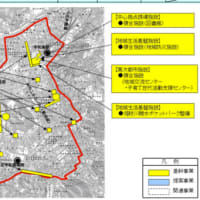
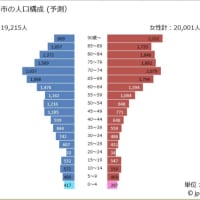


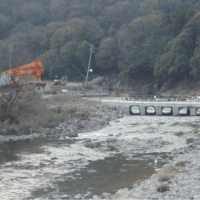
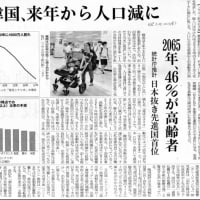
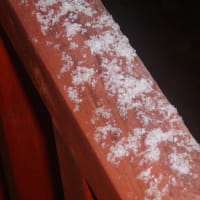

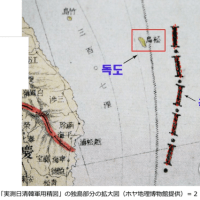
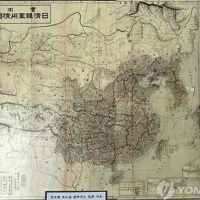






※コメント投稿者のブログIDはブログ作成者のみに通知されます